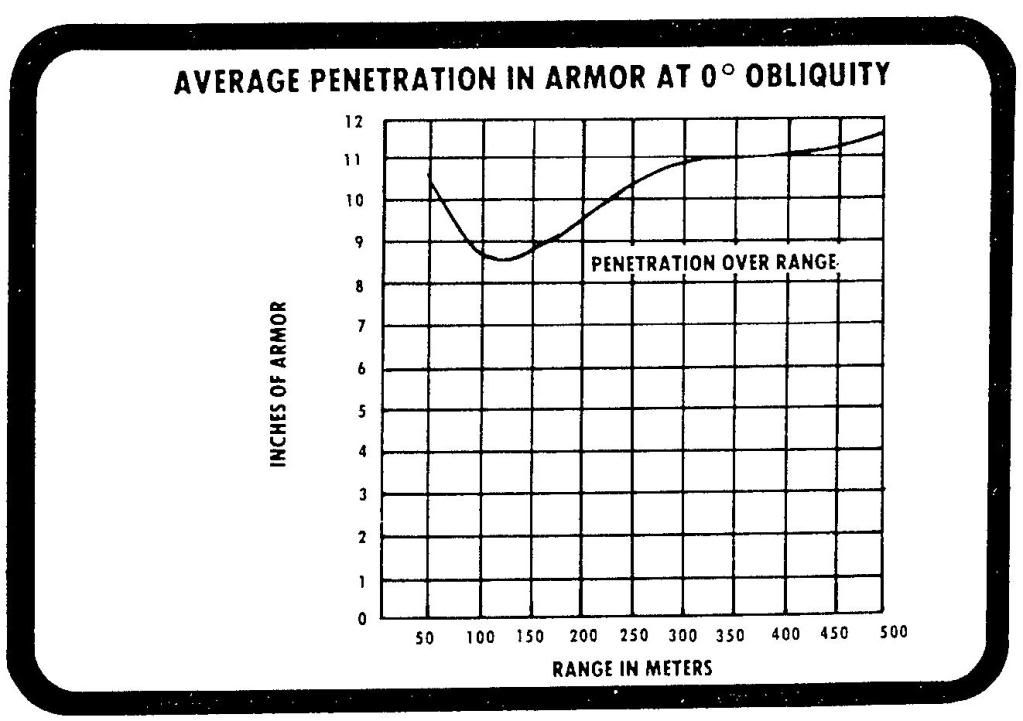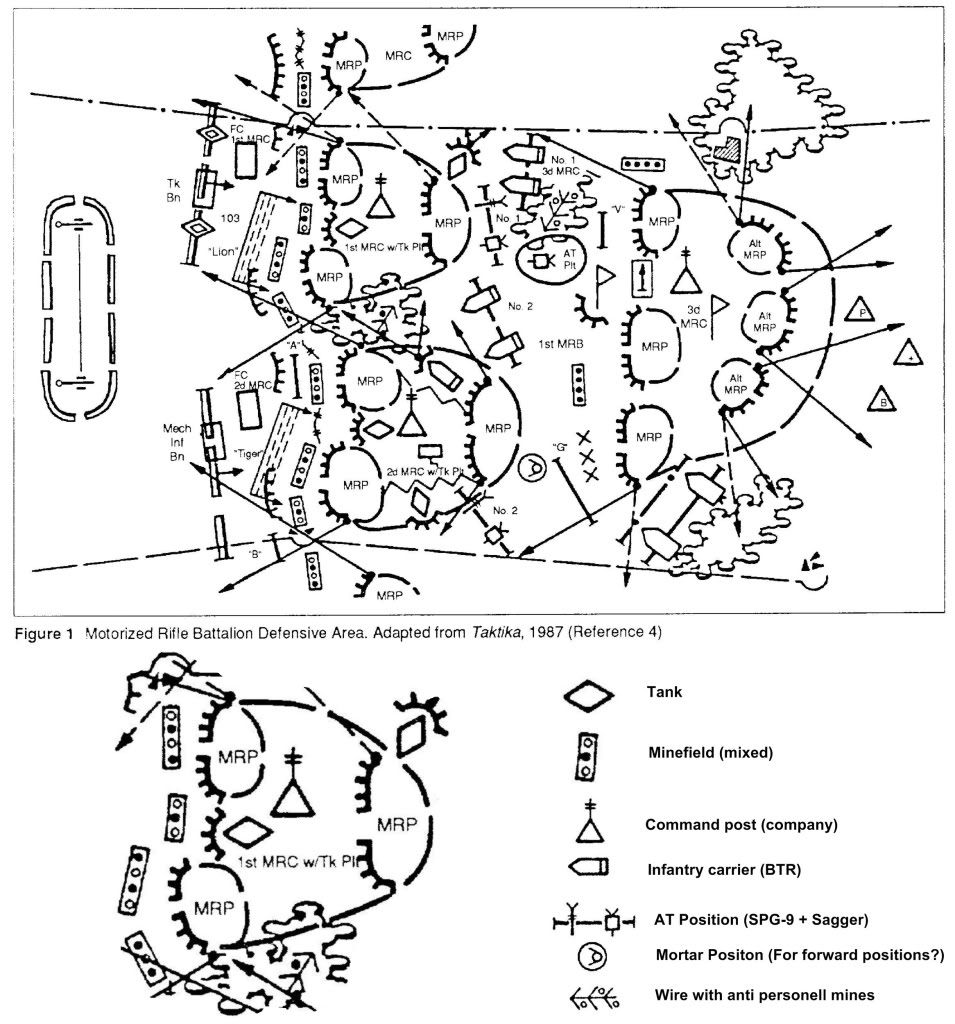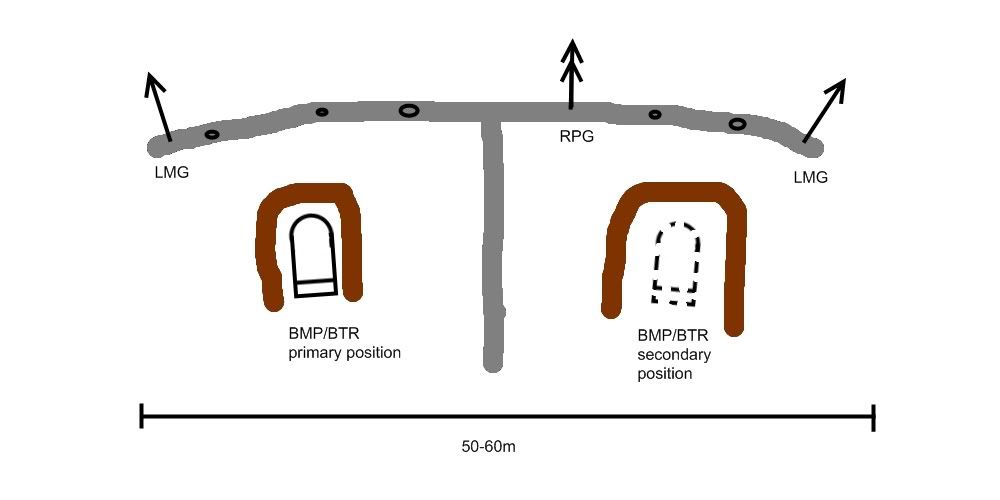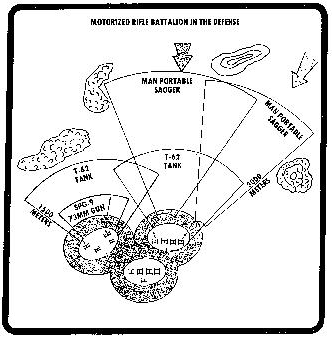
hcrof
-
Posts
1,100 -
Joined
-
Last visited
Posts posted by hcrof
-
-
Artillery
Artillery is known to the Russians as the 'king of battle' and can have a powerful effect on the enemy, bringing massive firepower to bear without risking your own troops to return fire. Correctly used it can turn a battle around but use it wrong and that firepower will go to waste or worse – kill your own men.
In general it is best to use quite small area targets, you should know where the enemy is and you don't want to 'dilute' the mission on empty ground as this will just be a waste of shells. Shock is crucial to destroy targets.
It might sound obvious but make sure you use all your artillery! If ammo levels aren't an issue an intense bombardment can save lives so while it is a good idea to keep a module in reserve, don't be afraid to unleash the guns.
Syrian artillery
Syrian artillery is significantly slower than its western counterparts, this reflects the less sophisticated communication systems and a rigid chain of command. This can be exploited by a western player. As they notice the first spotting rounds landing they can move their troops into safety, making it much less useful. If the Western player can keep the tempo high, the Syrians may never get the chance to call in any missions at all!
Syrian artillery is not useless however, spotting rounds and slow bombardments can be used to deny good locations from enemy spotters or javelin teams, on the offence the Syrians can destroy fixed defences like houses or trenches and a well planned preliminary bombardment can be devastating. See the MLRS section for how to exploit preliminary bombardments to the full.
Mortars
Mortars are the lowest level of artillery, used at battalion level or below (with a few exceptions out of CMSF's scope) as a form of on call firepower for the tactical commander. They are common and can quickly react to a fire mission but mortar shells are quite light and do not fragment as much as the heavier guns. Mortars excel at clearing infantry out of exposed trenches and open ground.
Example fire missions:
Infantry squad in a trench – A short linear fire mission along the trench. Quick/short duration, heavy intensity, airburst.
ATGM firing position – A small circular fire mission. Short duration, heavy intensity, airburst.
Enemy observation post – Any sized fire mission. 1 gun, maximum duration, light intensity, airburst. This will persuade most humans not to risk their observers although a bigger area will need a more intense mission (not 2 guns!). You may need to combine it with another, more intense fire mission to kill any observers already there.
Smoke mission – Linear fire pattern, maximum duration, heavy/medium intensity. Smoke
Guns/Howitzers
These are used by large formations at the critical points of the line. When attacking, they can be used to effectively suppress and destroy almost any position. When used in defence they can put down fire to slow down and destroy enemy forces – even vehicles! Bear in mind though that artillery takes longer to call in. Have a plan so that you call in the fire mission several minutes before you expect to need it. When it arrives, your troops should be just moving into positions to exploit the fire mission.
Example fire missions:
Destroy a house/line of houses – Point or linear fire mission, long duration, heavy intensity, anti tank.
Destroy a stationary vehicle – Point fire mission, medium/long duration, heavy duration, anti tank.
Suppress a position – Area fire mission, long/maximum duration, medium/high intensity. General
MLRS
Multiple launch rocket systems fire an enormous amount of explosives onto an area very quickly. Offsetting this advantage is the fact that the rockets don't fragment very well (comparable to mortars) and the fact that the fire mission is inaccurate. Don't expect to call in linear fire missions as the rockets spread themselves out in a 200m diameter. Usually used to launch cluster munitions or to perform counter battery fire, they can still have a huge shock effect on the battlefield against exposed troops. Their main disadvantages are the long reloading times and long delays for a fire mission.
Example fire missions:
Suppression before an assault – Area fire, maximum duration, high intensity, general/airburst. Cancel the mission after the first wave of rockets, the launchers with fire sporadically and inaccurately after that. Unless the enemy is very exposed they will not be destroyed, however they should be heavily suppressed with 20-50% casualties so immediately follow the fire mission with an assault.
Pre registered target – Area fire, maximum duration, high intensity general/airburst. Delay the fire mission (10-15 mins) and place it over somewhere you expect the enemy to be in that time. If necessary, suppress them with other weapons to fix them there and wait for the mission to hit them as they are exposed. If they don't arrive in time, cancel the fire mission.
Emergency fire missions
As a rule of thumb, don't bother with emergency fire missions as they are usually so inaccurate that anything but the largest area fire mission will miss completely. If you have a very experienced FO, preferably in a FO vehicle you can give it a go in a emergency but you will need multiple modules of artillery with big area targets to be sure of any effect.
Defending against artillery
Because artillery can hit anywhere, any time it must become a prime concern to a defender. There are 2 ways to defend against it and both must be used together. Firstly, forces must be spread out so that any artillery strike will not kill too many men. Dummy positions can be used to deceive your opponent as to where your MLR is to cause them to waste shells on tactically insignificant positions. Secondly, your positioning must be unpredictable. Trenches and houses are predictable places for your troops and the enemy may target them 'just in case'. Deploy your troops in such a way as to surprise your opponent and they might gain more protection from unpredictability than walls or trenches.
-
I'm pretty sure that there are a set number of mines buried in the one tile. Tiles are just never alone.
I really hope that BFC does a better job of minefields and other engineering for Normandy because the ones in CMSF are pretty frustrating given you can't find or clear them. Because of that they are never really used by scenario designers
-
hcrof - is this the same for HEAT rounds fired from tank cannons?
Well I can't speak with any real authority on tank rounds but I assume it is. The thing is that at short range you would probably use sabot anyway so the question is somewhat moot

-
Penetrating power? It's not a sabot round, the penetration values are the same, be if a shot from 10 meters or 500 meters.
If the warhead is travelling too fast the jet cannot form properly. At around 100m range the RPG rounds effectiveness drops off quite sharply as the sustainer motor has just burned out. At 300m the penetrating power is just as good as it should be. Unintuitive, but a lot of things about the RPG are unintuitive


-
I have a different experience, I regulary get hit at over 300m (with RPG7!) by green units and the crosswind sensitivity is very low (if it exists). I think it's too accurate in the game. Also there is a zero dud rate, which is totally unrealistic.
I always park my units more than 500m away from the Syrians because of this

The Soviets always thought that you had a 50% chance of hitting at 300m with the RPG-7. Indeed, the sights are set up to fire at 300m by default and the penetrating power of the warhead is optimal at this range.
The US army thought you had a 30% chance of hitting at 300m (stationary target, no crosswind)
It must be said though that the RPG-7 is not that easy to use and lower experienced troops should be pretty poor with it
-
When you open up a tank the commander gets a less restricted view. That means that he will notice stuff faster when it is less than a kilometer away, especially when it is not right in front of the tank. Any further than that and it is worth letting the commander using those fancy optics inside the tank to aid spotting.
When infantry attack a tank they will not fire at optics etc as far as I am aware. Unless they have anti tank rockets they will die very quickly.
-
I've always been pleasently surprised (or horrified!) at the range of RPG's. <100m will give you a very good chance of a hit but they are still effective IMO up to 300m. It's all about the tactical situation, if you are prepared to accept a 50:50 chance of a hit then go for it at long range (up to 400m for a stationary target). If you look like you will get nailed as soon as you fire then wait for the sure kill.
As above, as soon as you get regular experience, the soldiers are pretty good with the RPG. Also remember that volley fire is a great idea. Why use 1 RPG when you can use 3?

Last point. I think that oversized rounds like the 105mm RPG-7 round might be harder to use in the game. I would be very surprised if they were usefull at long range in real life!
Edit: The RPG-29 is a little more accurate than the RPG-7. With an experienced operator you can squeeze 500m out of it if you have to.
-
Well I had a look at the GS forums and was quite interested to see what people where discussing. I would say that although the tone is less positive than over here, people were not really saying much I would call unresonable. They just seem to be going over the same arguements alot.
I think that the people over there would do well to pay closer attention to what is happening over here (for themselves, rather than updates from GSX) because a couple of people seem to have the wrong end of the stick. However, many do have some good points that I (maybe not Steve
 ) agree with - even if they put them across quite strongly!
) agree with - even if they put them across quite strongly! -
I think weapons can get 'broken'. At any rate, sometimes weapons or ammo of any type doesn't transfer. Very frustrating if it happens to RPG's or RPG rounds
-
Looking at the official website I think they are saying autumn 2009.
"Дата выхода: осень 2009 года"
Can anyone confirm that?
-
The defence described above doesn't work too well in CMSF - there are no target reference points which are pretty vital for the Syrians. Ranges are too short to use ATGM's to their full potential, there is no engineering game, you can't camoflage positions (especially AFV positions), the list goes on

I think therefore that this defence, although interesting should be adapted to fit the game but I would be interested to hear what people think.
-
The soviet defence is based on a series of strongpoints and mobile reserves. It is seen as a temporary measure before an armoured offensive however so they didn't allocate a lot of training time to it.
The first thing to mention is that the Soviet (and likely the Syrian) junior leadership is not very effective. The Soviets knew this so endeavoured to keep as many decisions away from them as possible – leaving most of the command to the highly competent division/corps level staff (or higher if possible!). Because of this, a Soviet infantry company in the main line of resistance (MLR) is only expected to dig in and wait for relief. They will not retreat, even if they are about to be surrounded and so they will be prepared for a 360o defence.
The other thing, before I get into the set-up itself is that they will be screened by platoon sized forward outposts 1-2km ahead of the lines and by forward positions 3-5km in front whose job it is to observe the enemy, call down artillery fire and convince the enemy that they are the MLR. This means that hopefully the enemy will deploy early and conduct artillery/air strikes against very minor targets. They will then be vulnerable as they move forward under the defenders artillery fire.
Below is a bad drawing of a battalion defence but we can use it a a reference:

As you can see, a tank platoon is very often integrated into the company strongpoint to beef up its AT capability. Tank battalions are integral to a motor rifle division and the mantra of combined arms is often applied down to company level with a platoon of tanks attached for both offence and defence.
In this position, the BMP's/BTR's are integrated into the platoons but as seen above, this is not always the case and sometimes they can be used in a nearby fighting position.
Units above squad level are arranged in a line or a V (2 forwards/1 back or 1 forwards/2 back) depending on the terrain or orders from higher up and fights as a stongpoint. Frontages are usually around 5000m for a battalion, 1000-2000m for a company and around 500m for a platoon (50-60m per squad with 100m spacings)

The diagram below shows the anti tank capability of a late 70's Motor rifle battalion. It can be seen that there are overlapping fields of fire throughout the approach and AT weapons are expected to open fire at maximum range in order to slow the momentum of the attack down. (the dark areas are covered by RPG-7's)

The setup is designed so that when attacking tanks attempt to engage or avoid fire from one AT weapon, it exposes its flanks to another one. Minefields and obstacles are also used at all ranges to attempt to turn the enemy or to force them into killzones though this is probably not effective in the scale of a CMSF battle as the ranges are too short.
Although this is a Soviet defence it was used by Egyptians in the 1973 war and the Syrians certainly had Soviet advisor's until the end of the Soviet union. They have undoubtedly changed since but it is good to know the origins of their military theory.
-
I can definately recommend Switzerland. It is lovely summer or winter and a great place for kids. You are also slap bang in the middle of Europe so holidays are easy.
The only downside are the eye watering prices but if you can afford it I would definately say give it a go!
-
I think that what lomir described is a bit ambitious for a regular Syrian unit but Airborne or special forces could probably pull it off. I wrote a piece on a Soviet style defence a while back but at company level it is very simple. Essentially sit and wait for a freindly counter attack. With low quality lower leadership and poor quality troops it is probably all you could hope for.
I'll dig it out if anyone is interested, it has a couple of diagrams and pictures.
-
Thanks for the lengthy reply - I am certainly going to try it out!
You mention smoke a lot. I am beginning to use it more and more in offense, I shall have to use it more often in defence. I just wish we got more of it!
-
Thanks for looking at it Steve but I can't accept your arguement about why it should take so long. I had written out an arguement against every point you had there but I will leave that to someone who can speak with more authority.
What I will say however is, what in that whole list of points is fundimentally different from a HMG? The only AT weapon that comes in more than 2 pieces is an AT-3 and they do not need to deal with any recoil which means you can get away with a sloppy job setting out the tripod.
-
I generally think that Soviet soldiers were competant but according to Suvorov (a soviet defector who wrote a book which describes the life of a Soviet officer among other things), times given for tasks where unreallistic given the rescources allocated. Because of this, one soldier or squad would be told to practise at only one task like exiting a BTR while the rest of the company would specialise in other tasks in order to meet standards.
Because of this I think the deploy times mentioned in the field manual would probably be for idealised situatiuons with well rested crews who have had much practise in nothing but deploying an SPG-9 for a while before. Because of this I would say that the time given is about as fast as it is physically possible to deploy the weapon.
You might be right, elite crews could probably shave a few seconds off the field manual times so maybe you could start at 20 seconds. However I think my point still stands, in Syria the crews will be tired, scared, confused and generally not as fast as on the parade ground. But not as slow as in the game

-
Well that is pretty conclusive
 How about 30 seconds set up time for an 'Elite' team and make lower experience teams take a longer time?
How about 30 seconds set up time for an 'Elite' team and make lower experience teams take a longer time? -
I have always wondered about infantry defence. What do you do when the faeces hits the fan and the whole platoon is supressed by heavy incoming fire?
How do you avoid the position being hit with everything the enemy has got as soon as you open up on them?
In a modern defence it seems to me that once the AT defences have been cleared the battle is lost
-
I believe when the SPG-9 was mentioned last the BFC opinion of the time was that it was correct for a transport SPG-9 which would be broken down into 2 barrels (I think) a tripod, sight, ammo prep. Although sources listed the set up time as ~2 minutes it was believed that this was under a fire drill. At least thats what I remember.
As far as I am aware the barrel is single piece (albeit with an opening breach) and in combat situations I suspect the sight would be attached to the weapon before entering the battlefield.
Moving the weapon around should be slow, especially with a missing crew member, because it is bloody heavy - not setting the thing up.
-
I have brought this up before - specifically about the SPG-9 which takes 5 mins to set up in the game. In real life you put the tripod on the ground and the gun on the tripod facing vaguely the right direction. Add a few seconds for the team leader to get his bearings while the ammo is set out and you have 1.5-2 minutes max for anyone who is not conscript experience. Why does it take seconds to deploy a tripod mounted HMG but 5 minutes to deploy an SPG-9?
'Weapons and Tactics of the Soviet Army' by David C. Isby (Janes Publishing) claims that it takes 1 minute to set up the SPG-9. This may be slightly optimistic but it is clear that 5 minutes is a hopelessly long time to deploy the weapon.
Likewise, if the team needs to pack up in a hurry I am sure they won't sit around making sure every part of the launcher etc is in the correct place. The team with grab and run and sort out what to do with everything later. I can't remember the undeploy time but anything more than 10-20 seconds is way too slow.
-
Generation Kill is very, very good. It takes a while to develop but it is a compelling series.
The characters are believable - one Marine even plays himself! The action is good too, not over the top at all.
The banter is hilarious but the tensions between ambitious commanders and the men carrying out the often contradictory or unrealistic orders is what makes the series great. Highly reccomended.

-
I pause far too much with RT, I get bored with micromanaging every 10 seconds but I can't help myself!
WEGO for me

-
Try Battlegroup attacks - I am getting my ass kicked!
SPOILERS
Those TURMS-T's are suprisingly tough and since they are veterins (you are regular) they spot you first. You also have to be aggresive early as Brits to get out of that bowl - you have no flank security when you are in there.

Possiblity of improving the dismount command
in Combat Mission Shock Force 1
Posted
You can press dismount and then move in the same turn. You don't get highlighted action spots but you are definately moving the crew and not the vehicle. Because of this it takes 1 minute to dismount, not 2. I generally think of it as the crew getting their weapons off racks etc (yes, I know it doesn't take that long but it doesn't bother me too much - these vehicles shouldn't be used in assault anyway)
Move - wait for minute to end - dismount and move to infantry waypoint